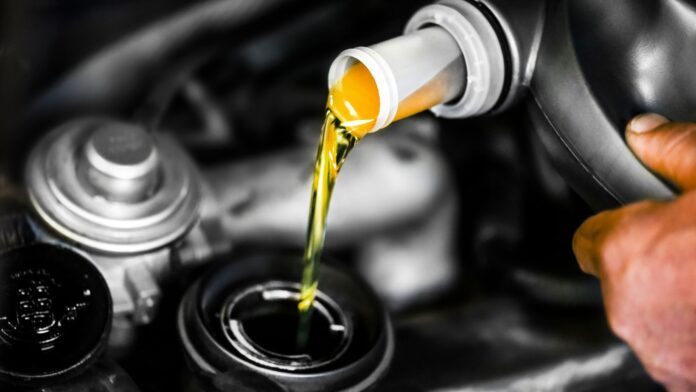Is 0w-20 The Same As 5w-30
When it comes to engine oil, there are various viscosity grades available in the market. Two popular options are 0w-20 and 5w-30. Many car owners often wonder if these two grades are the same or if there are any similarities between them. In this article, I’ll explore the similarities between 0w-20 and 5w-30 engine oils to shed some light on this common question.
Firstly, both 0w-20 and 5w-30 oils fall under the multi-grade category. This means that they have a range of viscosity that allows them to perform well in different temperature conditions. The “0w” or “5w” refers to their low temperature winter performance, while the numbers after the hyphen indicate their high temperature performance.
While these two grades share some similarities, there are also notable differences between them. One key difference is their thickness at higher temperatures. The “20” in 0w-20 signifies that it has a lower viscosity when compared to the “30” in 5w-30. This means that under extreme hot conditions, such as during summer months or heavy towing, the 5w-30 oil might provide better protection due to its slightly thicker consistency.
In conclusion, while there are similarities between 0w-20 and 5w-30 engine oils such as being multi-grade oils suitable for a wide range of temperatures, they do have differences in terms of viscosity at higher temperatures. It’s important to consult your vehicle’s owner manual or seek advice from a trusted mechanic to determine which grade is best suited for your specific vehicle and driving conditions.
What exactly is 0w-20 oil? If you’re familiar with the world of engine oils, you may have come across this term. In simple terms, 0w-20 refers to the viscosity rating of the oil. Viscosity is a measure of how thick or thin the oil is and plays a crucial role in lubricating engines.
The “0w” part of 0w-20 indicates the oil’s viscosity during cold weather conditions. The number before the “w” stands for winter, indicating that this oil is formulated to perform well in colder temperatures. The lower the number, the better it flows at low temperatures, providing improved start-up protection and reducing engine wear.
Now let’s talk about the “20” in 0w-20. This number represents the oil’s viscosity at operating temperature or when your engine has warmed up. A lower second number means that the oil remains relatively thin even when exposed to high temperatures. This characteristic helps maintain optimal lubrication throughout your engine’s components under normal driving conditions.
Many automobile manufacturers recommend using 0w-20 as a standard motor oil grade for modern vehicles due to its ability to promote fuel efficiency while still offering adequate protection against wear and tear. It strikes a balance between providing sufficient lubrication during startup and maintaining stable viscosity under high heat conditions.
It’s important to note that while both 0w-20 and 5w-30 oils serve similar purposes, there are differences in their cold-flow properties and thickness at operating temperatures. These variations might be significant enough for certain vehicles or specific climate conditions to require one over another.

Viscosity Comparison
When it comes to comparing the viscosities of 0w-20 and 5w-30 motor oils, there are some important factors to consider. While these two oil grades may seem similar due to their numerical values, they do have distinct differences that can significantly impact their performance in different environments and conditions.
- Temperature Sensitivity: The “0w” and “5w” in the oil grade represent the viscosity index at low temperatures. The lower the number before the “w,” the better the oil flows at colder temperatures. Both 0w-20 and 5w-30 oils are designed for use in colder climates or during winter months when engines require easier start-up and lubrication. However, there is a slight variation between them. The 0w-20 oil provides better cold-start protection compared to 5w-30, as it flows more easily when temperatures drop below freezing.
- Viscosity at Operating Temperatures: While both grades offer adequate lubrication during cold starts, they behave differently under operating conditions. The numbers after the “w” indicate how thick or thin an oil becomes when heated up to its operating temperature range. In this aspect, 0w-20 has a lower viscosity than 5W-30 at higher temperatures. It means that the former offers smoother flow and potentially reduces friction losses within your engine components when running hot.
- Fuel Economy vs Engine Protection: The choice between 0W-20 and 5W-30 also depends on your priorities: fuel economy or engine protection? Due to its lower viscosity characteristics, many automakers recommend using 0W-20 for newer vehicles as it can help improve fuel efficiency by reducing internal drag within engine parts such as pistons and bearings. On the other hand, if you have an older vehicle with high mileage or one that operates under heavy loads frequently, you might consider 5W-30 as it provides better protection against wear and heat at higher temperatures.
- Manufacturer Recommendations: To ensure optimal engine performance and longevity, always refer to your vehicle manufacturer’s recommendations regarding oil viscosity. They have conducted extensive testing and research to determine the best oil grade for your specific engine model. Following their guidelines will help maintain warranty coverage, maximize efficiency, and minimize potential issues.


